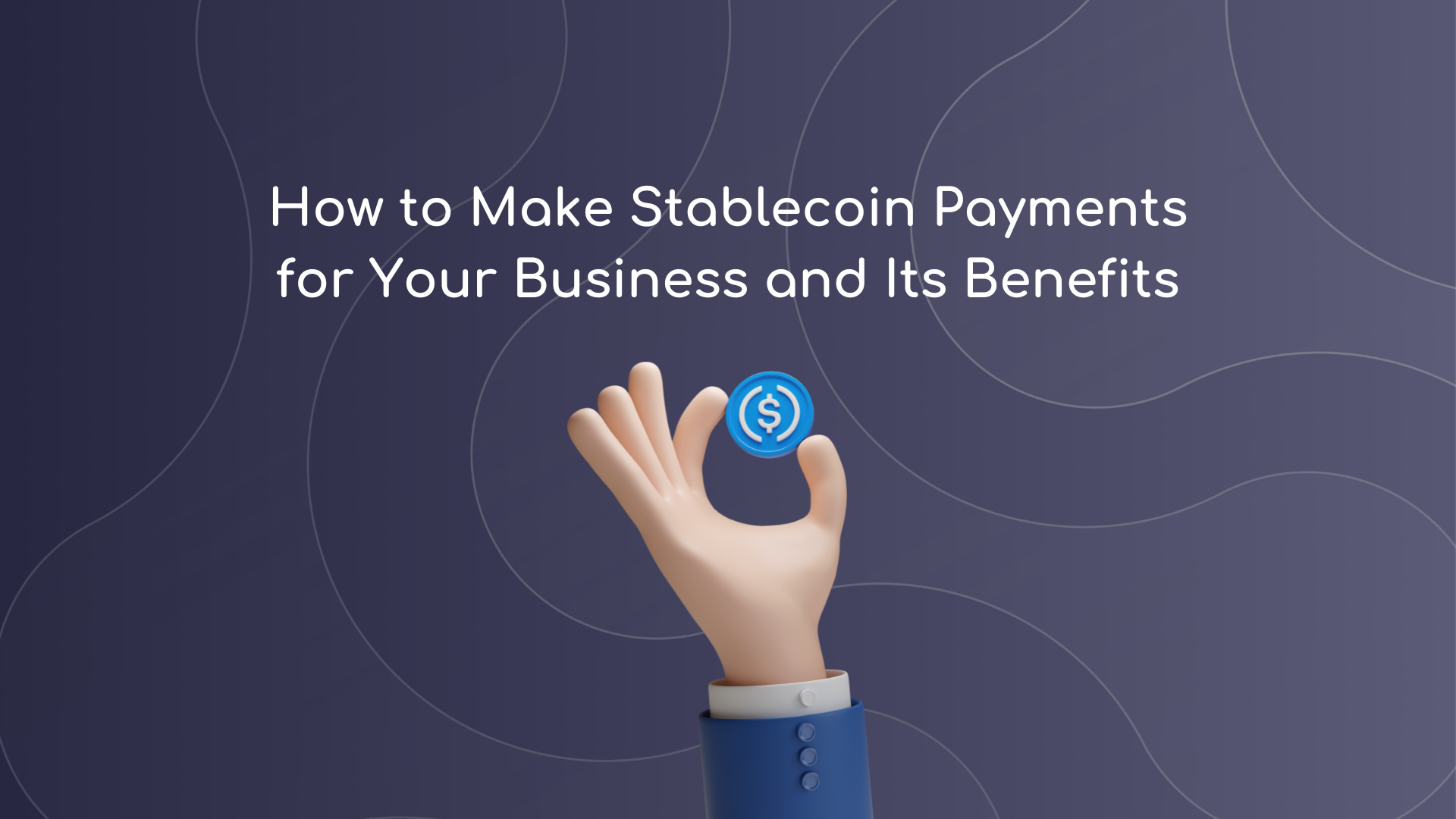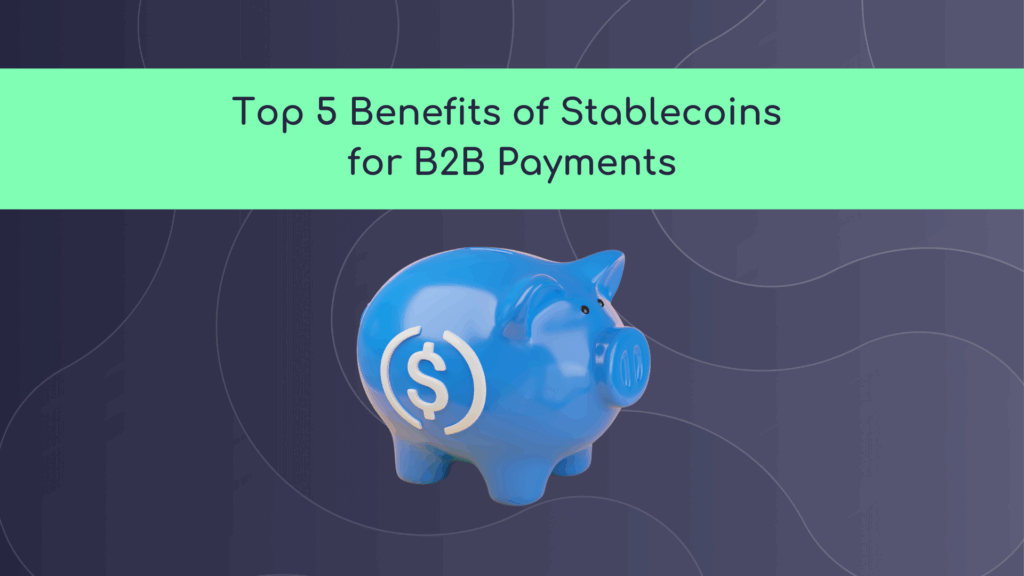Introduction
With rising fees, slow settlement times, and limited banking access in many regions, businesses are looking for faster, more efficient ways to pay partners and suppliers. Enter: stablecoin payments.
In this article, you’ll learn:
- How to make stablecoin payments step by step
- What tools your business needs to get started
- Key benefits like lower fees, real-time settlement, and FX protection
1. What Are Stablecoin Payments?
A stablecoin is a digital asset pegged to the value of a fiat currency (like the US dollar or euro). Common stablecoins include:
- USDC (USD Coin)
- EURC (Euro Coin)
Stablecoin payments allow businesses to send money globally, without banks, often in minutes, and with very low fees, all while keeping the value stable.
2. Why Businesses Are Adopting Stablecoin Payments
| Benefit | Description |
| 🔄 24/7 Settlement | No delays—payments clear anytime, even weekends |
| 💸 Lower Fees | Transactions often cost < $1 vs $30+ for SWIFT |
| 🌍 Global Reach | Pay anywhere with internet and a wallet |
| 📉 FX Risk Reduction | Use USD/EUR-pegged coins to avoid currency swings |
| 📊 Transparency & Control | Track payments on-chain in real time |
According to Circle and Visa, on-chain stablecoin payments reached $27.6 trillion in volume in 2024.
3. How to Make Stablecoin Payments for Your Business
Step 1: Choose a Stablecoin Provider
Look for regulated platforms like:
- Damex (for B2B and treasury use)
- Circle (USDC/EURC issuance)
Step 2: Set Up a Wallet or Custody Account
Options:
- Self-custody: MetaMask, Ledger
- Institutional custody: Damex business accounts.
Step 3: Fund Your Wallet
- Purchase stablecoins via wire or card
- Convert fiat → USDC/EURC through your provider
Step 4: Initiate the Payment
- Enter recipient wallet address
- Choose the right network (Ethereum, Solana, Tron…)
- Confirm and send
Step 5: Record & Reconcile
- Track on-chain via block explorers (e.g., Etherscan, Solscan)
- Export transaction history for accounting
4. Best Practices for Stablecoin Payments in Business
- ✅ Use whitelisted wallets and KYC partners
- ✅ Verify regulatory compliance (esp. under MiCA in EU)
- ✅ Consider multi-sig wallets for team approval flows
- ✅ Automate recurring payments with smart contracts
5. How to Receive Stablecoin Payments as a Business
- Display wallet address or QR on your invoice
- Use a payment provider (like Damex or Coinbase Commerce)
- Accept multiple stablecoins and convert when needed
Conclusion
Stablecoin payments give your business the speed, cost-efficiency, and flexibility that traditional finance struggles to deliver. Whether you’re managing international vendors, paying a remote team, or simply avoiding unnecessary banking fees, adopting stablecoins like USDC or EURC could streamline your operations, starting today.
The information contained in this article is not to be considered as financial, legal or professional advice. Services or technologies not provided by Damex referred to in this content is for information purposes only and you should consider doing your own research or ask us for further information or assistance. Any reliance placed on information is at your own risk.Damex.io is regulated in various jurisdictions. Damex provides services to institutions and sophisticated investors only and Damex’s services are not available to retail users. Information on services provided relevant to your jurisdiction and information on the unique risks that digital asset trading carries are available at damex.io/disclaimer and damex.io/risk-notice.






